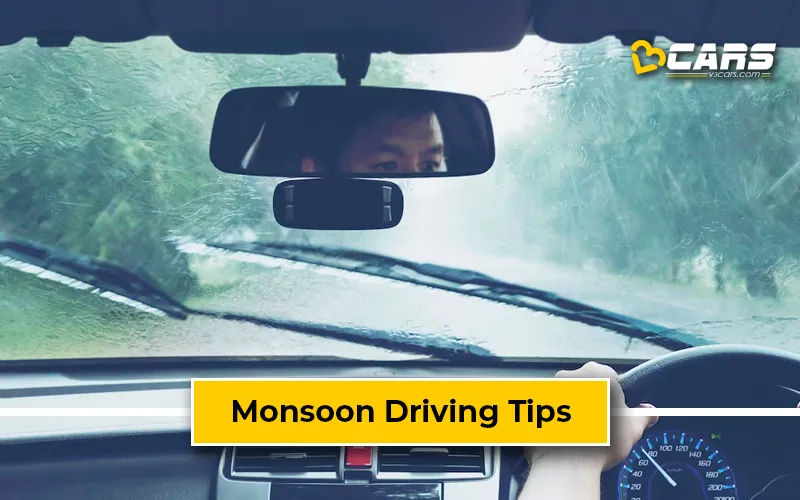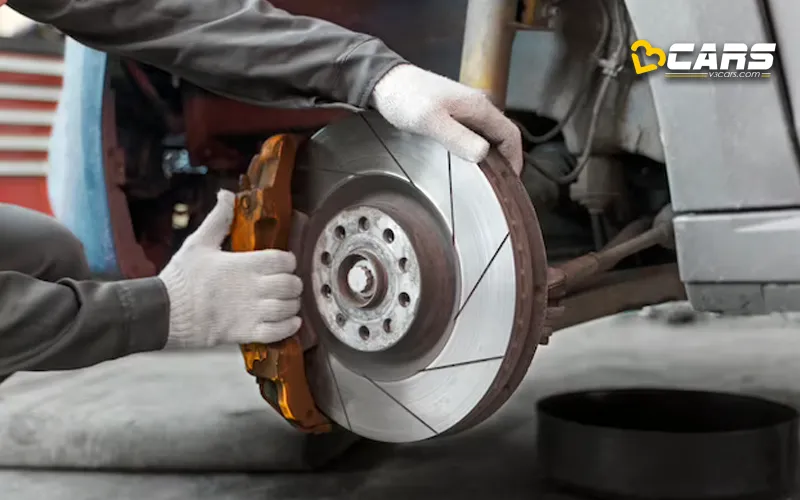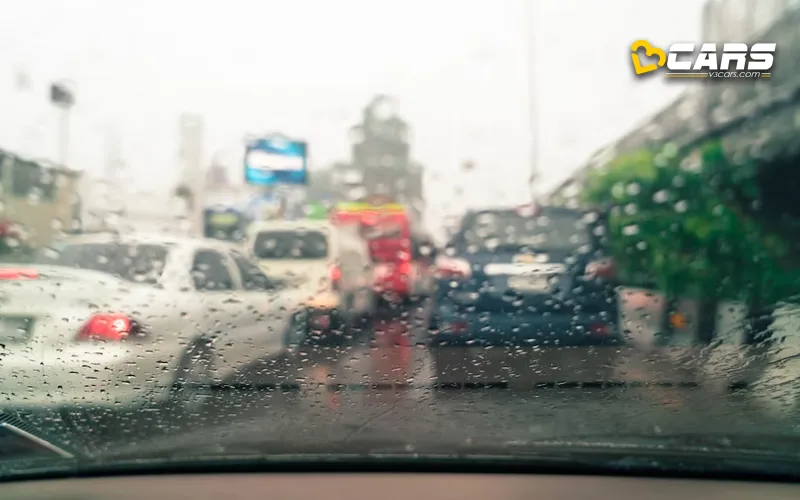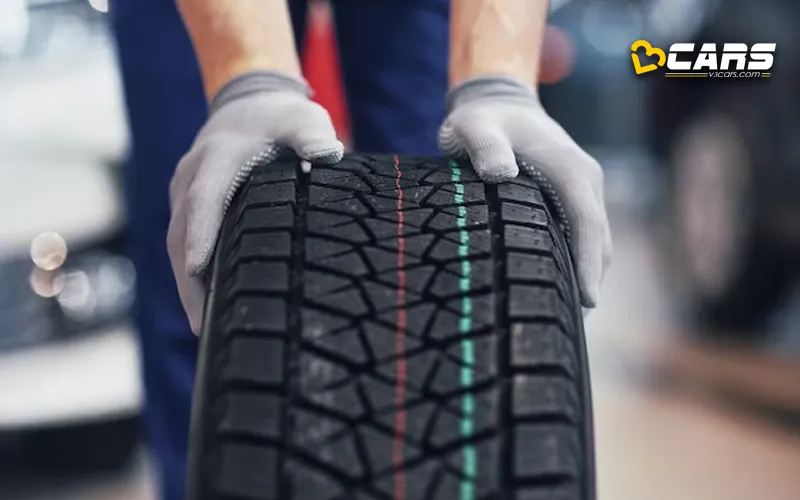Tips To Get Yourself And Your Vehicle Monsoon Ready
To stay safe while driving on Indian roads, the driver must always be fully prepared to 'expect the unexpected.' From finding animals squatting on the fast lane right after exiting the corner, to jaywalking pedestrians, vehicles changing lanes without warning, and vehicles stopping in the middle of the road without warning because the driver had to make/receive a call, all are part of the 'normal everyday scenario.' Understandably, driving a vehicle on our roads is quite challenging and requires our full attention in the interest of safety.

During monsoons, when the roads are wet and slippery, visibility is less, and waterlogging makes crater-sized potholes seem harmless, driving safely becomes even more challenging. The safety risks are amplified, and the things one must look out for increase exponentially! To make monsoon driving easier while keeping yourself and others safe on the road, we have compiled some guidelines that you must follow at all times.
Get Your Car Monsoon-Ready
Irrespective of which car you drive, get the tyres, wipers, headlights, tail lights, indicators, and brakes inspected before the onset of the monsoon season. Wet roads are slippery as there’s lesser traction on offer which increases braking distances. Hence, the tyres must have adequate tread to ensure good grip even on the most slippery surfaces. Get your tyres checked for any cuts or bulges, and get them changed if the tread depth is insufficient.
The next thing you should do is get the brakes changed and replace the brake pads if necessary. On wet roads and slippery roads, it’s absolutely essential that your vehicle should be able to come to a stop quickly and safely. On rainy days, visibility tends to drop substantially. So, the headlights, tail lights, and indicators are working overtime to warn other users of your presence and intention to change lanes. Hence, get them checked and replace the bulbs if necessary.

Also, it’s ideal to get the wiper blades replaced before the onset of each monsoon since they will be at work during most of monsoon drives. Driving around with non functional lights and wipers is a hazardous situation that must be avoided by undertaking preventive maintenance.
Maintain Greater Distance Between Cars
During monsoons, roads tend to be wet or littered with dirt, debris, and mud, which makes them more slippery than usual. Hence, surface traction reduces which in turn increases braking distance for all vehicles. Additionally, the visibility drops when it starts pouring. So, while driving in the monsoon, it's best to maintain a distance of at least a couple of car lengths from other moving vehicles. Also, keep a lot more space between your vehicle and others while overtaking as they could spot an obstacle late and might end up swerving suddenly.
Be considerate to other road users like motorcyclists and auto rickshaws as they have much lower traction on wet roads. Be extra careful when driving behind two-wheelers, as they could end up taking an unfortunate fall owing to a deep pothole. Keeping distance between your vehicle and other road users gives you more space to react in case of an emergency.

Note: Instantly Sell Your Old Car With V3Cars Sell Used Car Platform
Take It Easy And Leave Early
Typically during each monsoon season, vehicular movement slows down and it’s common to get stuck in slow-moving traffic. Instead of cribbing about this or trying to speed up in order to reach on time, it's better that we plan our day to leave early. This will ensure that we have sufficient time at hand to drive slowly & steadily, without increasing road safety risks.
Don’t Be A Hero
We have all seen pictures and videos of vehicles being driven through flooded streets splashing water and it does look super cool. However, it’s not in your best interest to copy such antics on public roads. In fact, you should always drive cautiously on flooded roads to prevent expensive engine damage from water entering the engine. Also, engine damage owing to hydrostatic lock isn’t covered by standard vehicle insurance.
We recommend staying away from driving on water-logged roads if the water level is such that it completely submerges more than half of your vehicle’s tyres. Do not drive through a flooded road if you are unaware or unsure of how deep the water level is. If the water is too deep and the flow too strong, your car could get submerged or swept away. So, always exercise utmost caution upon encountering water-logged roads.
Note: Find Out The Fuel Price In India Using V3Cars
Aquaplaning Alert
Always remain alert and look out for stretches that are covered by large patches of standing water. When a vehicle drives over a standing patch of water at high speeds, the tyres aren’t able to quickly channel out the water and lose contact with the road. The tyres end up skating on the layer of water between it and the road. This phenomenon is known as aquaplaning and it results in loss of control.
When aquaplaning occurs, the steering suddenly goes extremely light and lifeless. In such a situation, one must remain calm, hold the steering wheel tightly, and step off the accelerator. Avoid any accelerator, braking, or steering inputs for it could make the vehicle spin out. At a speed of 80kmph, new tyres are able to disperse 30 litres of water per second. As the tyre tread reduces, so does the ability to quickly disperse water. Hence, get the tyres checked and replaced if necessary before the onset of monsoon.

Monsoon Driving Etiquettes
While driving in the rain there are some etiquettes that we all must follow to collectively make life easy on the road. Since visibility reduces when it’s raining, it is vital to always indicate before changing lanes. During heavy downpour one is more unlikely to spot vehicles in their blindspot or be easily seen by other vehicles. Hence, one must drive cautiously and refrain from any sudden directional changes or braking.
On wet roads, drive smoothly and reduce vehicle speed or come to a stop gently so that the vehicles following yours have sufficient time to react. Drive at a speed slower than normal as big potholes could end up damaging your car’s suspension. Especially go slow while driving on water-logged roads, to prevent splashing dirty water on pedestrians and other road users.
Pro tip: During monsoon, ensure that your vehicle always has at least half a tank of fuel. This will be useful if you happen to get stuck in a massive traffic jam. Also, ensure your tyres aren’t overinflated as the contact patch will reduce and that’s not an ideal scenario on wet roads!
Also read: 8 Must-Have Accessories For Your Next Off-Road Adventure


0 Comments